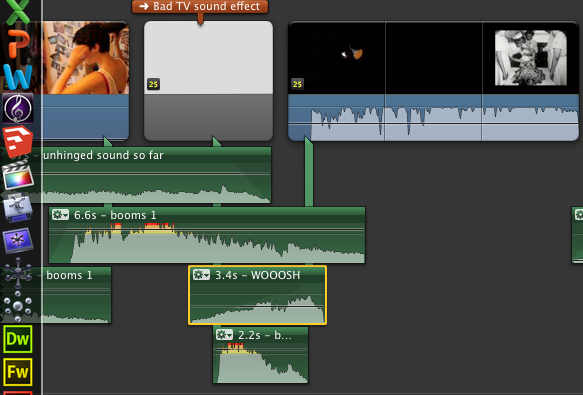Evaluation Question 3
What have you learned from your audience feedback?
Survey
- After conducting a survey on the basis of our initial ideas about our 60 second teaser trailer the feedback we received helped us to establish large parts of the narrative and consolidate ideas that we had primarily agreed on. One of the main aspects that we chose to concentrate on within our survey questions was the representation of the protagonist and antagonist.
- We asked questions regarding mise-en-scene and costumes. It was a great opportunity to allow our audience to get a say during our planning stages of our overall package as it allowed us to air our decisions and obtain critical feedback that aided our decisions, as you can see from the image on the right
YouTube - From our audience feedback we had to take on board a moderate amount of small changes. Reoccurring comments focused on areas of the sound and camera angles that suggested that the protagonist and antagonist had a friendship. After taking on board the feedback we made final tweaks to the sound by building the tension in the sound earlier before the montage scene to avoid a feeling of detachment in the sound.

 Our audience noticed that the "booms" leading up to the montage were not effective enough, however after some consideration we realised that the build up in sound towards the montage was actually not effective enough at all.
Our audience noticed that the "booms" leading up to the montage were not effective enough, however after some consideration we realised that the build up in sound towards the montage was actually not effective enough at all.
- To overcome this issue, we decided to not use the same "boom" track in the build up to the montage that is already being used in the montage. That way, the new timbre of the "boom" in the montage will have a bigger and more effective impact on our audience as it's not a sound that they have already heard in our trailer. It makes it less predictable. We decided to cut the piano track earlier than we had previously, therefore it didn't play during the montage scene.

- Additionally, we also also cut the "woosh" audio clip from one of our audio tracks that were previously used in the trailer and applied it to the end of the title to create a bridge passage between the sound of the scenes before and the montage scene. Once we had applied all of these changes to the sound, we copy and pasted the "booms 1" track below the "woosh" creating another layer but we cut to the climax of the "boom 1" audio clip and this added to the tension and created an entrance that was needed for the montage scene.
- Furthermore, the "boom 1" track was cut as close to the climax of the track as possible, this way the booms got faster as we neared the montage building up suspense and anticipation in the trailer. Using track "booms 1" instead of the "booms" track which were used in the montage scene allowed us to pace ourselves a lot more in the build up rather than building up the tension in the wrong place altogether. Overall, this solved the problem and the booms used in the montage scene, proved to be more effective.

The feedback also allowed us to look at our trailer in a much more critical light and for us it definitely gave us the opportunity to be able to make informed decisions based on the response from our audience. It was made aware to us that the narrative may have been unclear at points in the trailer due to using camera angles and editing, therefore we chose to cut out on the amount of eye line matches we used between the protagonist and the antagonist.
 Our audience feedback benefited us majorly as it allowed for our audience to suggest what would be more effective and this solved the issue we had about certain parts of footage that we were indecisive to remove or keep. Our audience feedback also highlighted areas of our trailer that we had not picked up on such as the sound layers not following on from each other and certain camera angles making the narrative unclear to hard to follow.
Our audience feedback benefited us majorly as it allowed for our audience to suggest what would be more effective and this solved the issue we had about certain parts of footage that we were indecisive to remove or keep. Our audience feedback also highlighted areas of our trailer that we had not picked up on such as the sound layers not following on from each other and certain camera angles making the narrative unclear to hard to follow.
No comments:
Post a Comment